On March 17, people all around the globe celebrate St. Patrick’s Day. Originally established to commemorate the “Apostle of Ireland” Saint Patrick, the holiday has evolved into a day to honor Irish heritage and its rich culture and traditions. So, in the spirit of St. Patrick’s Day, let’s join the celebration by taking a look at the native dog breeds lucky enough to call Ireland their country of origin.
There are a total of nine dog breeds originating from the Emerald Isle – two hounds, three sporting dogs and four terriers. Currently only eight of them are recognized by the American Kennel Club (AKC), with one of the hounds only being recognized by the Irish Kennel Club (IKC) in 1991. So, who are these lucky pups? Come on, let’s meet them!
THE TERRIERS
Irish Terrier
Believed to be the oldest of the four terrier breeds in Ireland, the medium-size, long-legged Irish Terrier has been a fixture of the country’s rural landscape for hundreds of years. Bred to be a versatile all-around farm dog, the Irish Terriers were used as ratters, loyal watchdogs, guardians of livestock and even hunting companions. They are known to have irresistibly charming and jovial personalities and are very affectionate toward people – even strangers. They make great family pets, but the Irish Terrier is as feisty and fiery as its red coat, so this high energy breed is best suited for active families who can provide the mental and physical exercise they need.
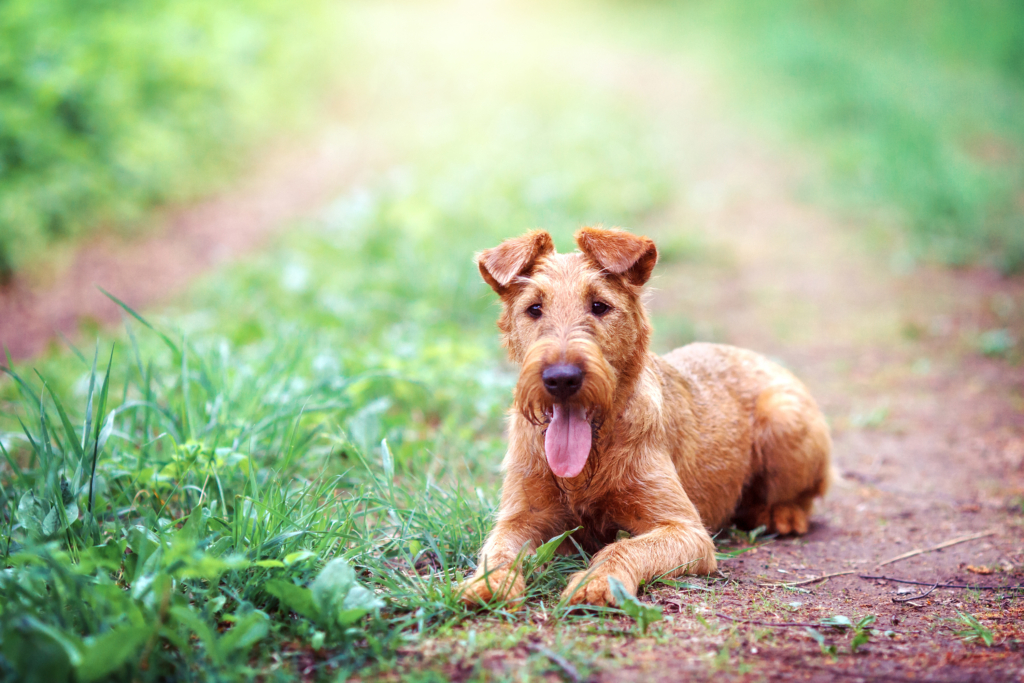
Fun fact: Nicknamed the “Daredevil” of the terriers, the Irish Terrier was used as a military “War Dog” during the First World War, serving as a sentinel and combat messenger close to the front line.
Kerry Blue Terrier
With very few references to the Kerry Blue Terrier prior to the 20th century, it’s as if the breed magically appeared on the southwest coast of Ireland approximately 150 years ago. And of course, with their specific origin being a mystery, there are Irish folk tales about how the breed came to be. One such tale is that blue dogs swam ashore from a Spanish Armada shipwreck and bred with local dogs. Whatever the case may be, this gorgeous blackish-blue breed was used for controlling vermin, hunting birds and small game, and even herding cows and sheep. Today, their alertness and courage make them the perfect watchdog, and their gentle and lovable nature make them great companions.
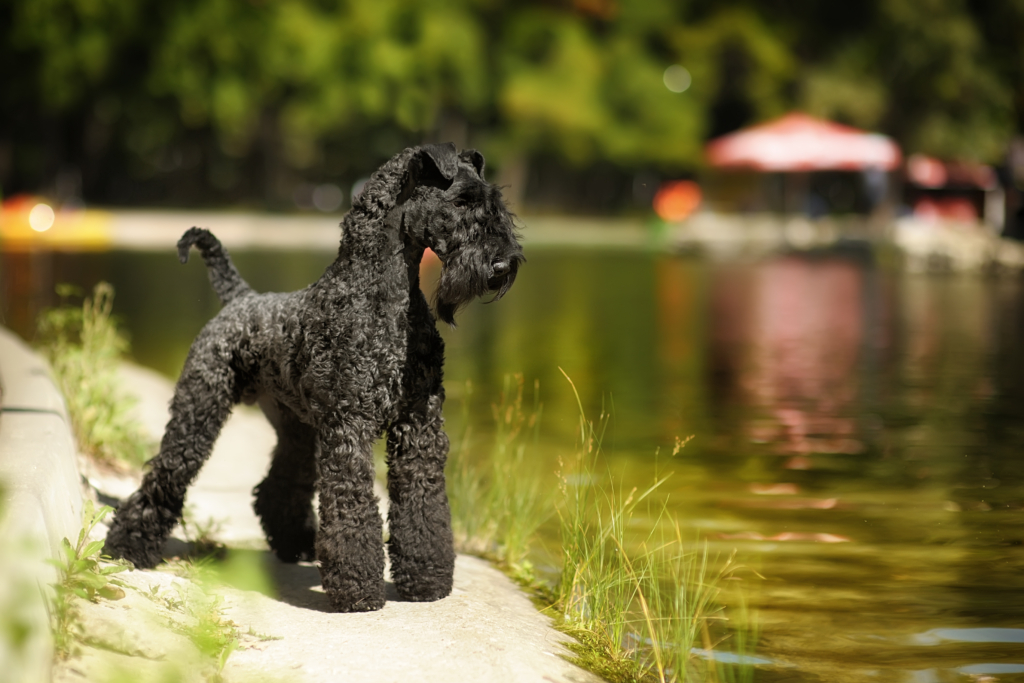
Fun fact: Kerry Blue Terrier puppies are born black and get lighter as they reach 18 months of age, eventually reaching a shade of “blue” ranging from a dark slate to a light blue-grey coloration.
Soft Coated Wheaten Terrier
Described as “an iron fist in a velvet glove,” the Soft Coated Wheaten Terrier is a sturdy working breed distinguished by its silky, gently waving wheat-colored coat and merry disposition. Bred as an all-purpose farm dog and family companion in Ireland, this terrier breed tends to be less scrappy than other terriers, yet they are just stubborn enough to remind you that they are indeed a terrier. Lively and affectionate, Wheatens retain their puppy exuberance and energy level for life. When they get excited, they can jump straight up in the air, and they have tendency to jump up on people. Known as the “Wheaten Greetin’,” this behavior is nearly impossible to correct.
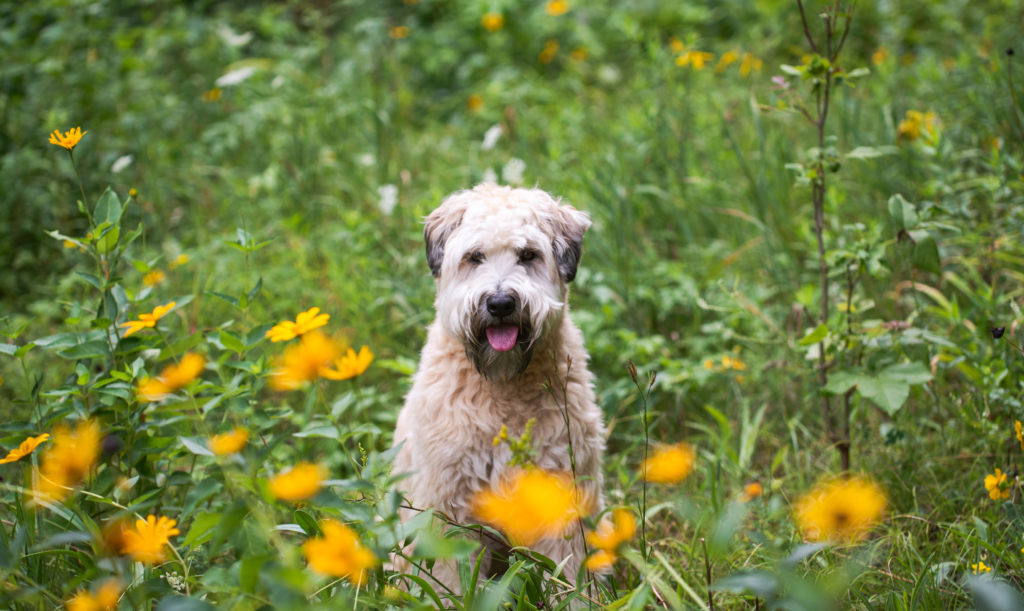
Fun fact: A 17th century law forbade Irish peasants from owning “any hound, beagle, greyhound, or land-spaniel” – so the Soft Coated Wheaten Terrier was sometimes referred to as the “poor man’s Wolfhound.”
Glen of Imaal Terrier
Arguably the cutest of all the Irish breeds, the Glen of Imaal Terrier is named for the remote and rocky glen in County Wicklow from which it originates. Also known as the Wicklow Terrier, fanciers of this breed affectionately refer to it as the Glen, or Glennie. Originally bred as a working dog to rid the home and farm of small vermin, this tough “big dog on short legs” was up to the challenge of hunting foxes and badgers as well. Today, the breed still proves capable of being a hunting companion, but its gentle and affectionate nature also makes it a wonderful family pet and companion.
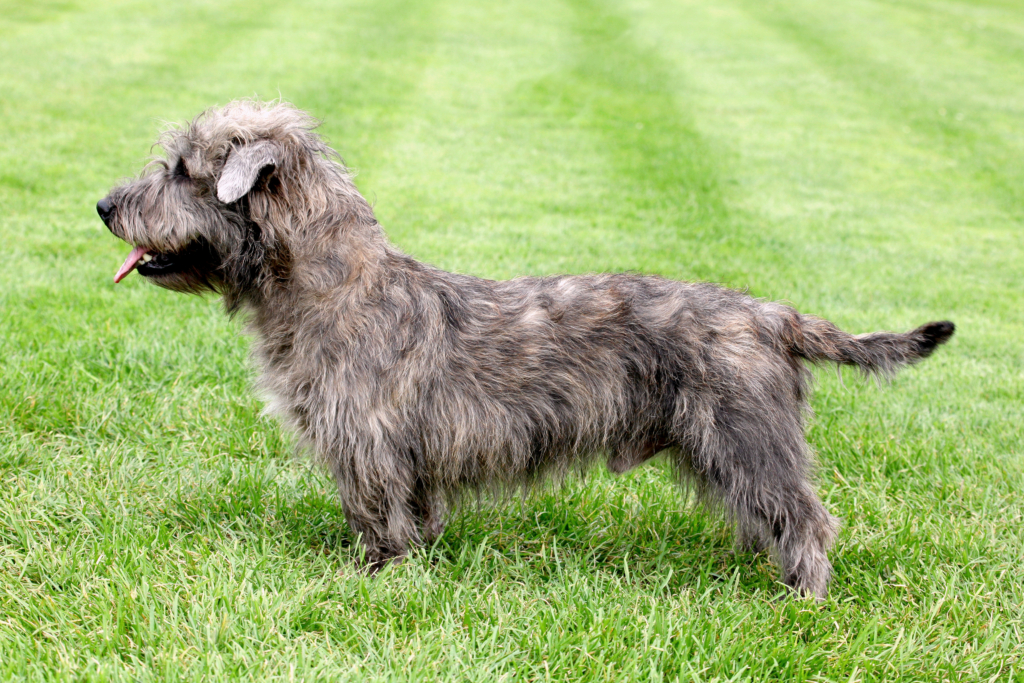
Fun fact: It’s speculated that the Glen of Imaal was a turnspit dog – a short-legged, long-bodied dog breed that was utilized in the kitchen to power a circular treadmill that rotated meat on a spit over an open fire.
THE SPORTING DOGS
Irish Setter
Known for its dazzling deep chestnut red or mahogany coat, the Irish Setter is probably the most recognizable of the native Irish dog breeds. Early Irish Setters were actually red and white, but predominantly red setters began to appear in the 1600’s. The solid red coat became fashionable in the late 1800’s, and its popularity led to selective breeding, with the all-red Irish Setter becoming the breed standard in 1886. Originally bred as a bird dog for both pointing and retrieving, the Irish Setter of today is more commonly seen in conformation events, obedience competitions and kept as a household pet. In fact, the breed’s friendly and affectionate temperament make it a great companion or family dog.
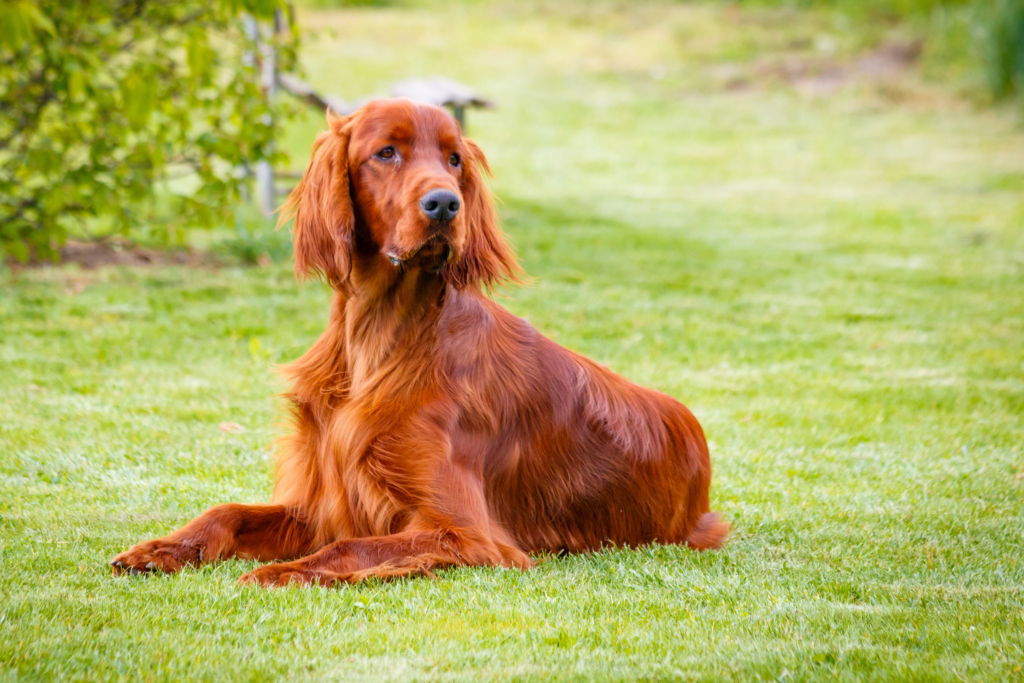
Fun fact: Ireland’s national bus company, Bus Éireann, has featured an Irish Setter mascot in its logo since 1987. According to the company, its canine logo represents the “friendly, reliable and fast way in which the company aims to serve its customers.”
Irish Red and White Setter
A close relative of the all-red Irish Setter, the Irish Red and White Setter is the older of the two breeds, dating back to at least the 1600’s. Primarily bred to be a bird dog, the Irish Red and White Terrier is prized by hunters for its natural pointing abilities, athleticism, stamina and adaptability. It’s also worth noting that its vivid “islands” of red on white make it easy to spot from afar. In addition to its natural talent as a sporting breed, the Irish Red and White Setter displays a charming, friendly attitude that makes it the perfect companion for outdoor activities like hiking and biking as well.
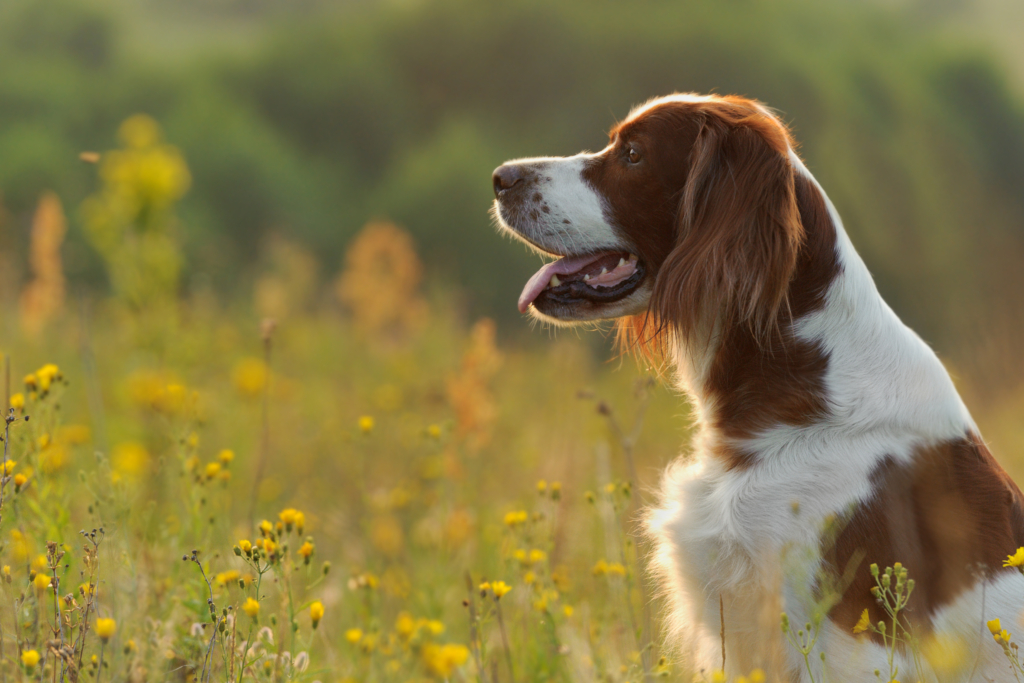
Fun fact: The Irish Red and White Setter was originally bred to hunt birds with nets, not guns. When they went on point, the dog would crawl rather than crouch, allowing the hunter to cast a net over the birds.
Irish Water Spaniel
Bred to be a hunting dog, the webbed feet, water repellent coat and hairless tail of the Irish Water Spaniel make it a perfect waterfowl retrieving dog. Sometimes referred to as the Shannon Spaniel, Rat Tail Spaniel, Whiptail Spaniel and Bog Dog, this breed is also considered the clown of the spaniels – most likely because of its boisterous personality, but also probably because of the curly poof of hair that sits upon its head. Playfully affectionate toward their families, they make great pets for people with kids and will thrive in an active household.
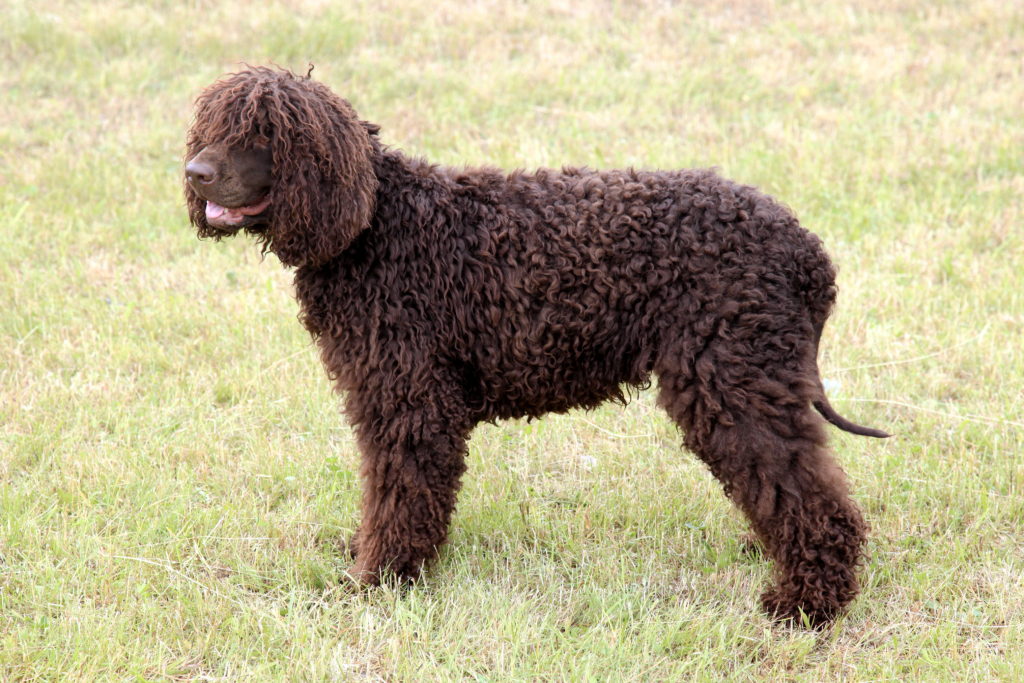
Fun fact: In Irish folklore, the Irish Water Spaniel is said to have descended from the Dobhar-chú (pronounced do-war coo), a mythical lake creature resembling both a dog and an otter – and sometimes described as being a half dog, half fish.
THE HOUNDS
Irish Wolfhound
Standing approximately three feet tall and weighing up to 180 pounds, the Irish Wolfhound is an enormous sighthound that also has the distinction of being tallest dog breed in the world. It’s also likely the oldest breed from Ireland, with the first written account of them dating back to 391 AD. Despite its somewhat intimidating size, it is a very gentle and playful breed. The majestic breed’s motto is “gentle when stroked, fierce when provoked” – and the folk saying, “lambs at home, lions in the chase,” is used by the Irish Kennel Club to describe the breeds behavior and temperament. Once fearless hunters of wild boar, deer, giant Irish elk and wolves, today’s Irish Wolfhound makes the perfect canine companion.
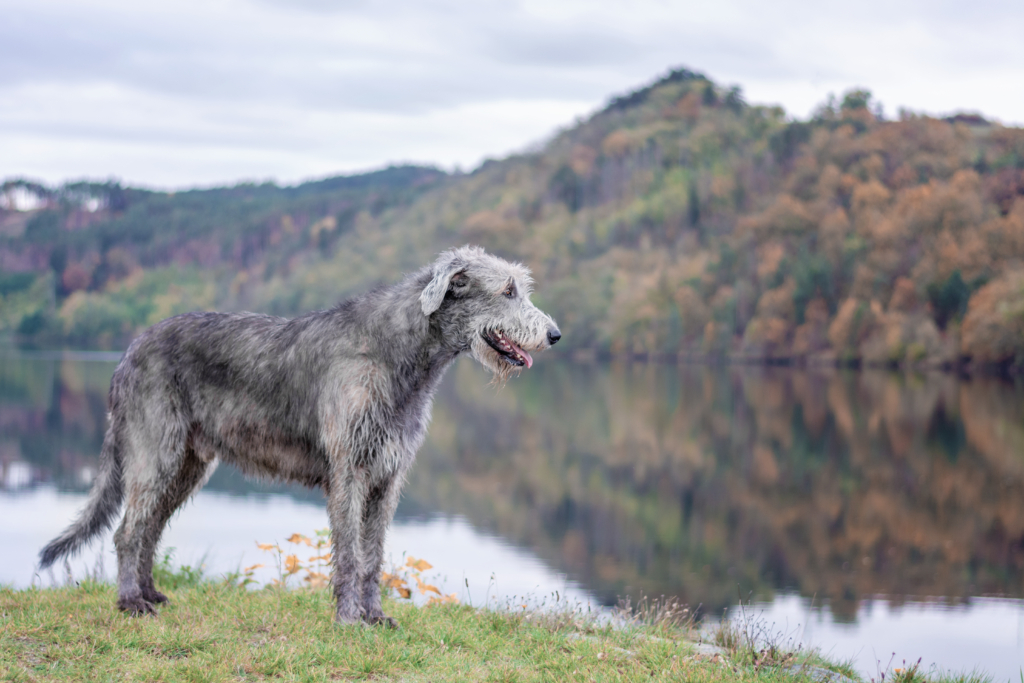
Fun fact: In 15th century Ireland, each county was required by law to keep 24 Irish Wolfhounds to protect farmers’ flocks from the ravages of wolves.
Kerry Beagle
Despite being one of the oldest native breeds to originate from Ireland, the Kerry Beagle is not recognized by the American Kennel Club or the Fédération Cynologique Internationale (FCI, World Canine Organisation). In fact, the only major kennel club that recognizes it as a distinct breed is the Irish Kennel Club, and that only came in 1991. Originally bred to hunt stag in a pack, today they are mainly used to hunt fox and hare, and to take part in the equestrian sport of drag hunting. One such pack is the famous Scarteen Hunt hounds of County Limerick, which has been in existence for over 350 years.
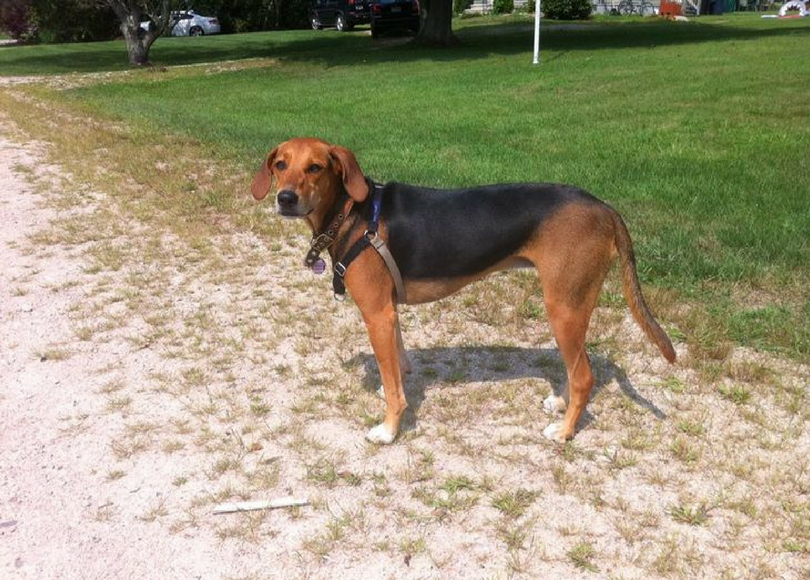
Fun Fact: According to Irish legend, when Noah’s Ark came to rest against Galtymore, the highest peak in Tipperary, a pair of black and tan hounds leaped off in pursuit of a fox and never returned. These two dogs are said to have been the first Kerry Beagles.
For a look at the eight AKC recognized Irish breeds in action, check out this quick two-minute video from the American Kennel Club.
For further reading on these remarkable Irish breeds, check out The Curious History of Irish Dogs by David Blake Knox.
